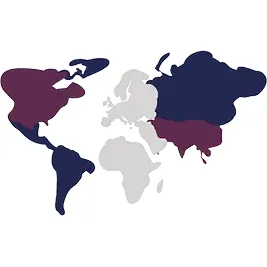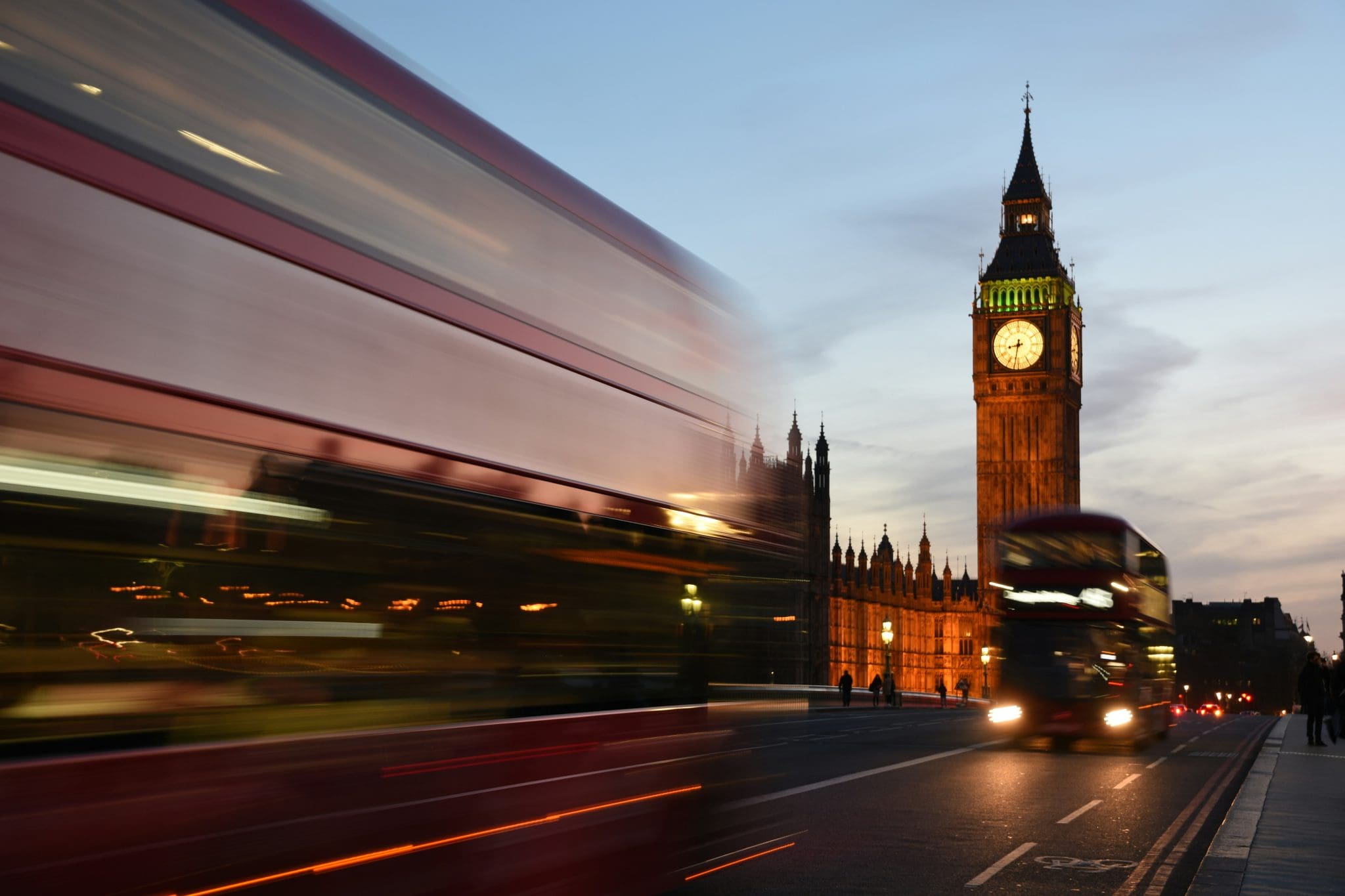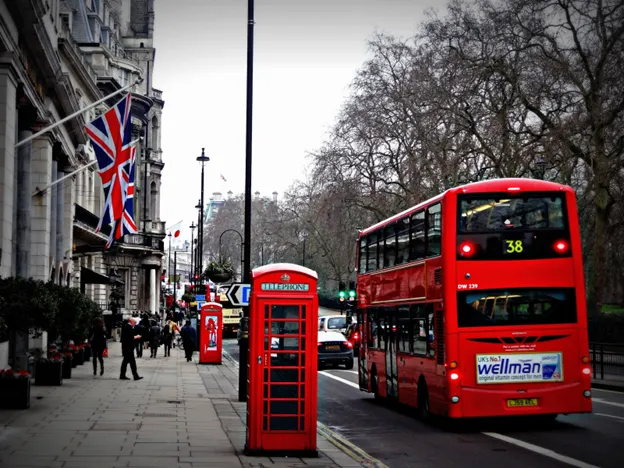Why Are Countries Curbing Immigration?
Governments around the world are implementing laws to tighten borders and restrict immigration numbers. But what are the reasons behind these policy shifts?
If you have any questions or concerns about your immigration matter, whether in the UK or anywhere else in the world, IAS can help. Reach out to us on +44 (0)333 414 9244 or contact us online today.
Read our 1001 reviews
Changing Attitudes to International Immigration
There is an unmistakable shift in attitudes to international immigration in countries around the world. Many governments are clamping down on illegal and legal immigration, implementing stricter border and entry rules to try and bring down migration numbers.
The reasons for this can be broad; they can range from concerns to overpopulation putting a strain on public services and finances, worries about national identity, and separatist or cultural concerns.
Countries will often give unique justifications for enforcing anti-immigration measures, taking into account factors such as the perceived general public opinion on immigrants, economic and social policy, and the political motives of government groups or officials.
Opponents of these measures may conversely cite the economic benefit that immigrants bring to countries, or the moral obligation that first-world countries have to accept refugees and asylum seekers, many of whom may be displaced and have no other option than to try and settle in other countries.
In this article, we’ll cover individual countries who have enforced measures to crack down on immigration in an effort to understand government motivations behind such measures and public perception of these policies and of immigrants.
Hungary
Hungary is one of the many EU countries that have recently implemented stricter immigration rules for foreigners.
In March of 2024, several new rules came into effect that largely aim to reduce overall long-term immigration numbers and tighten restrictions for foreign workers. Most significant is the end of the ‘single permit’ system and the introduction of the less lenient ‘guest worker’ permit category, restricting foreign workers in Hungary from living in the country long-term, switching their status or allowing their family members to settle.
Around 300 job roles were also made ineligible for non-EU workers, further restricting the scope in which foreign migrants can come to Hungary.
These policies came into effect under the leadership of Hungarian Prime Minister Viktor Orbán, who is staunchly anti-immigration and has been openly critical about the EU’s migration policies.
In the wake of the 2015 Paris attacks, Orbán stated: “We do not want to see a significant minority among ourselves that has different cultural characteristics and background. We would like to keep Hungary as Hungary.”
Many have cited Orbán’s nationalistic rhetoric and policies as contributing towards the country’s general feeling of antipathy towards illegal immigrants, further stoking general anti-immigration attitudes. Some commentators have also pointed out that foreign migrants can, and have, been used as a scapegoat by the government to blame the country’s precarious economic situation on.
Hungary implemented one of the most visible and drastic measures to crack down on illegal immigration in the world in 2015, building a 200 mile border fence along its southern borders with Serbia and Croatia in response to the European migrant crisis.
Only around 4.7% of Hungary’s population are immigrants, compared to 17.6% in Croatia or 11.3% in Slovenia. The combination of Orbán’s nationalistic rhetoric and increasingly restrictive immigration laws are likely to have both a visible effect on the country’s immigration numbers in the coming years, as well as influence the country’s general attitudes towards economic and illegal immigration.
Sweden
Sweden is, according to its government, undergoing a ‘paradigm shift’ in terms of its approach and attitudes to immigration.
After a significant period of time operating under liberal immigration policies, particularly during the high numbers of European migration in 2014 and 2014, Sweden is now implementing harsher and stricter controls on its borders.
Some of the policies introduced by the current centre-right government include stricter criteria for asylum seekers to crack down on undocumented migrants, tighter restrictions on the ability to bring family members into the country, and raising the minimum income threshold for work permits.
Requirements for applying for Swedish citizenship are also planned to be stricter in future, with Swedish language and knowledge of Swedish society requirements and “stricter moral requirements” being put into place.
The Swedish government has placed these measures at the heart of its new approach to immigration, stating that “Labour immigration fraud and abuses must be stopped and the ‘shadow society’ combated,” the ‘shadow society’ here referring to undocumented illegal immigrants residing in the country.
Why have these measures been put into place? Various reasons have been given, but one of the most prominent has been the rise in gang and gun violence in Sweden, which has been reported to spread out of larger cities and into smaller towns. Many areas in Sweden which are labelled as high-risk for such violence also have large immigrant communities.
According to the Swedish government, illegal drug trading activities and gang crime can be linked to poor integration of migrant communities into Swedish society. The current government has further blamed past ministers and governments for “irresponsible” immigration policies, hence the shift to tighter measures.
Despite the changes, the new policies have drawn criticism from political opponents and the Swedish public, some of which argue that the changes will create labour shortages and encourage marginalisation of vulnerable groups. However, it is apparent that Sweden’s sharp and decisive shift into cracking down on illegal immigration sends out a powerful message to other countries in the EU and beyond.

Denmark
Denmark’s story is similar to Sweden’s, with some actually citing Denmark’s approach to immigration having partly influenced Sweden’s paradigm shift.
However, the discourse around Denmark’s immigration policies mostly appear to be centred around refugees and asylum seekers, resulting in what some commentators have deemed one of the harshest refugee policies in the world.
The policies are wide-ranging, but have included placing immigrants in squalid and hostile immigration detention centres, cutting refugee benefits, implementing a “jewellery law” which allows refugees’ belongings to be seized, and withdrawing temporary protections for Syrian refugees.
The last policy has been particularly contentious in the international community, with many condemning Denmark’s decision to deem parts of Syria as “safe” and revoking residency permits from Syrian refugees.
All of this has culminated in the Danish Prime Minister, Mette Frederiksen, stating that the country’s goal is to have zero asylum seekers coming into the country.
These policies are, much like the other examples already given in this article so far, largely devised by politicians and policymakers on the centre- and far-right. Justifications for anti-immigration sentiments include concerns over Danish social cohesion and the integration of immigrants, and the ability of immigrants to support themselves in Denmark and adopt “Danish values”.
Politicians such as Frederiksen have also raised concerns over what they deem “anti-democratic values” that immigrants from Muslim countries bring to Denmark, such as extremist Islamic views. Denmark’s social, security and welfare systems are also mentioned as part of political manifestos setting out anti-refugee policies.
Canada
In 2015, Justin Trudeau was elected as the Prime Minister of Canada after promoting multiculturalism as an integral part of Canadian society and identity.
However, nearly ten years later, his government is attempting to backtrack on their mostly liberal policies to bring immigration numbers down by around 21% percent over the next three years.
Trudeau himself has admitted that his government “didn’t get the balance quite right” regarding the extremely high levels of immigration after the Covid-19 pandemic. A survey earlier this year has also found that the Canadian public think there is too much immigration into the country for the first time in 25 years.
What is driving these shifts in opinion? Further polls surveying the Canadian public suggest that a growing number believe that immigrants are to blame for issues such as the rise of cost of living and increased pressure on Canada’s health services and infrastructure.
However, of growing concern for many is Canada’s current housing crisis, where the availability and affordability of property means that many are being priced out of being able to afford to rent or buy. The conjunction of the housing crisis and higher immigration levels into Canada’s towns and cities are, according to some, causally linked.
These issues have unfortunately been reflected in general xenophobic attitudes amongst some Canadians, with reports of hate crimes against ethnic minorities nearly doubling between 2019 and 2023.
A significant concern in Canada is also the sharp rise in temporary workers and students coming to the country, which some have said is responsible for issues such as stagnating wages and dwindling employment figures.
Central to both Trudeau’s and the opposing Conservative party’s manifestos, it seems, is a desire to regain control of Canadian immigration numbers to try and tackle the issues that most affect everyday Canadian people.
Chile
Chile’s main aim in its newer immigration policies is single-minded: to crack down on numbers of immigrants from countries such as Haiti and Venezuela, which have been at relatively high levels for decades.
Around 30% of Chile’s foreign-born population are from Venezuela, and around 80% of them travelled to Chile after 2017, signifying a large-scale movement of immigrants to the country.
Chile is an economically stable nation, with good public services, job prospects, security and low crime rates compared to many of its other South American neighbours. However, the influx of migrants in the 21st century have, like in so many other nations, sparked worry and concern.
In January 2022, thousands of Chileans marched in a protest against Venezuelan migrants, after a video emerged of Chilean police officers being beaten by suspected Venezuelan drug dealers.
Protestors reportedly marched with banners touting anti-immigration slogans and even burned possessions belonging to Venezuelan migrants.
The media coverage regarding immigrants in Chile has partly led to a general dissatisfaction over immigration numbers. According to Cristián Doña-Reveco in the Mixed Migration Review 2023, Haitian immigrants are disproportionately stereotyped as being “poor, violent and backwards” compared to other immigrant groups, and are often used in the media as examples of immigrants who are likely to “game the system” by using tourist visas as gateways to apply for temporary visas.
Similarly, the influx of Venezuelan immigrants are said to be linked to higher crime levels and possibly instigating political and social unrest in the country.
A knock-on effect from negative media portrayals of immigrants in Chile is declining public opinion on the matter. Polls have shown stark statistics such as over half of all respondents saying that the government should curb all immigration, and almost half saying that they think irregular migration is one of the three main causes of crime in Chile.
According to Doña-Reveco, this shift in attitude can be “plausibly associated with the country’s political, economic and public health crises” as well as generally negative media coverage, leading to fast-growing anti-immigration sentiment amongst the Chilean public. This chimes with the current government’s newest policies to crack down on immigration, including extending the scope of deportations, assigning additional manpower to oversee deportations and expanding militarised border control zones.

Australia
A similar narrative has played out in Australia in both new measures implemented by the current government and public opinion towards immigrants and immigration.
A 2023 review of the Australian immigration system found that it was “badly broken” and in need of “major reform” in order to get it back up to standard.
This was announced in conjunction with the news that Australia accepted a record number of migrants in 2023: around 510,000.
Since then, the country has implemented a broad range of tighter immigration measures, such as stricter requirements for international students, restricting applications for switching between visas, and slightly raising the minimum income threshold for certain work permits. Although these policies are not as drastic as other countries’ at face value, they still reflect a wider demand for the government to bring down migration numbers.
Justifications for this include a desire to relieve pressure on Australia’s housing crisis and to lessen the impact on the country’s infrastructure, as well as a desire to crack down on the misuse and abuse of existing visa systems.
In particular, serious issues with Australia’s student visa system allowed fraudulent ‘education providers’ to scam prospective students, while others were taking advantage of a loophole to use their student visas as a gateway to working in Australia.
A 2014 poll showed that, when given a list of reasons as to why Australia should accept fewer migrants, stated that an emphasis should be placed on training “our own skilled people” rather than taking them from other countries as the most popular reason, with unemployment and overcrowding in cities coming second and third, respectively.
However, the current Leader of the Opposition, Peter Dutton, has notably inflamed current discourse around immigration by citing high immigration figures as a contributing factor for housing shortages, road congestion and pressure on public services.
Despite this, according to a February 2024 Ipsos poll, only 34% of Australians believe that the country would be stronger if immigration was stopped, which is lower than the global average of 43%.
For a country with the highest proportion of foreign-born nationals among major Western nations, this still no doubt poses questions on the future of the country’s immigration system and the ever-rising pressure on the government to act swiftly to curb numbers.
UK
In 2022, the UK saw a net migration figure of approximately 745,000, which is the highest figure since records began.
This sharp rise of immigration to the UK sparked a drive from the then-Conservative government to drive down immigration numbers, citing various reasons such as added pressure to the NHS, public services, the economy and state welfare.
Calls to bring down immigration numbers had been relatively common in the UK, with vocal fringe political groups such as UKIP, the BNP and Reform largely adopting political platforms centred around anti-immigration and isolationism.
This arguably peaked in 2016 with the Brexit referendum, where the majority of the UK voted to leave the European Union, in part driven by a campaign to “take back our borders”, which strongly implied a desire to seize control of the flow of immigration and reduce the numbers of EU citizens arriving into the UK.
Since then, there have been numerous policies put into place to reduce net migration into the UK, with some of the most notable being the raising of the Skilled Worker salary threshold, the raising of the Spouse visa income threshold, and severely restricting the rights and freedoms of undocumented migrants and asylum seekers coming to the UK.
According to previous and current governments, these policies have been put into place both to drive down net migration numbers for prosaic reasons such as to ease pressure on public services and housing, but also because it is largely the “will of the people” to see lower immigration numbers.
However, polls suggest that the British public are largely divided on the issue of immigration, with a 2023 survey by UK in a Changing Europe and Ipsos reporting that 50% of respondents would like to see immigration levels stay the same or increased, and 42% would like to see immigration levels reduced.
The EU Pact on Migration and Asylum
Earlier this year in April, the EU put into force the historic EU Pact on Migration and Asylum, presenting a unified solution for migration and asylum issues to be implemented across all member states.
According to policymakers, the goals of the pact include faster and more efficient processing of migrants at European borders, increased solidarity between member states and more secure borders overall.
Generally speaking, the pact has been implemented in response to growing concerns around undocumented migrants entering the EU and the increased pressure placed on EU member states given the stark rise in asylum seekers and immigration numbers. The pact has arisen around a time where nationalistic politics and anti-immigration sentiments have become increasingly common in Europe, with many countries introducing further measures to clamp down on immigration numbers and restrict the rights and freedoms of immigrants.
It can be argued that the goal of the pact is not to help facilitate movement into the EU, but to standardise systems across countries and ease tensions regarding issues of which nations should be responsible for handling and processing asylum seekers.
The pact is not without its detractors. The International Rescue Committee have raised concerns over the new pact, stating that there will likely be a “further rollback of people’s right to seek asylum, more detention at borders including for families with children, even fewer opportunities for people to have their asylum applications processed fully and fairly”.
Other critics have also pointed towards the risk of human rights violations, a sharp increase in immigration detention across Europe, and its failure to tackle the issue of border states being disproportionately responsible for handling asylum cases.
The pact appears to be reflective of a growing movement across Europe and other countries to tighten borders and exert more control over the flow of immigrants into countries. Record numbers of migrants were displaced in 2024, with the number expected to rise in 2025, so the pact and other measures put into place by countries around the world are expected to attempt to deal with this ongoing situation that is still a primary concern for many.
How Can IAS Help?
Immigration remains a hot-button topic for many countries, with increasingly strict and hostile regulations being imposed to try and curb migration numbers around the globe.
If you’re looking to move to another country, it’s more important than ever to ensure that you do so safely and securely, without jeopardising your chances of being able to move and settle in your destination country.
IAS can help. We offer expert, professional and friendly immigration advice for those who need to get to where they’re going safely and efficiently. Whether you’re moving for economic, social, family or welfare reasons, our global immigration experts can provide the advice and support you need.
We can help with visa or permit applications, navigating international immigration laws and legislature, and with asylum or refugee support. We can also help if you or a family member has been detained or is at risk of being deported.
Call us today on +44 (0)333 414 9244 or use our online contact form to get in touch.
Table of Contents
Table of Contents will appear here.Legal Disclaimer
The information provided is for general informational purposes only and does not constitute legal advice. While we make every effort to ensure accuracy, the law may change, and the information may not reflect the most current legal developments. No warranty is given regarding the accuracy or completeness of the information, and we do not accept liability in such cases. We recommend consulting with a qualified lawyer at Immigration Advice Service before making any decisions based on the content provided.















